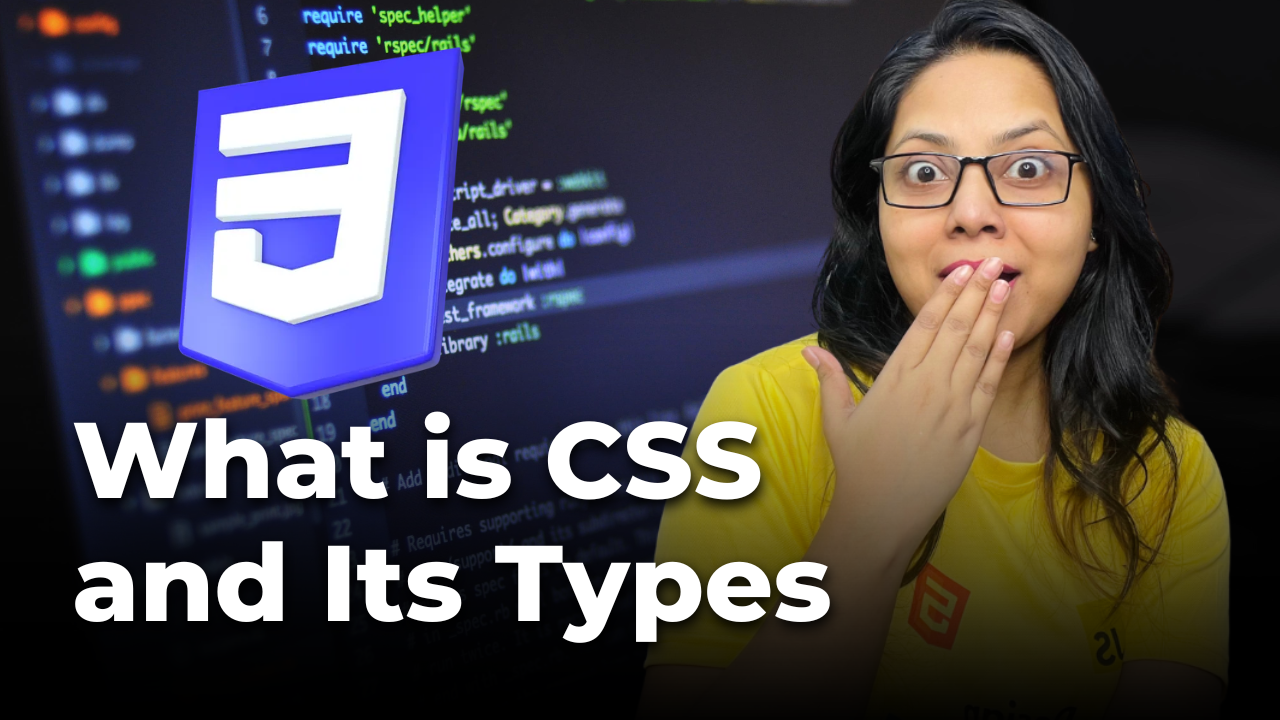CSS stands for Cascading Style Sheets, a fundamental technology in modern web development. It defines how HTML documents are visually presented and arranged on a webpage.
In simple terms, CSS allows developers to apply styles such as font size, color, margin, padding, and spacing to web elements. This makes websites not only visually appealing but also more structured and user-friendly.
If you want to master CSS from the basics to advanced techniques, check out my CSS E-Book Course, where I explain everything step-by-step and with practical examples.
Understanding CSS in Web Design
CSS plays a vital role in shaping a website’s identity. Without CSS, web pages would look plain and text-heavy. It separates content from presentation, ensuring cleaner code and easier design adjustments.
Therefore, learning CSS gives you creative control over how users experience your website — from the layout to the smallest color transition.
1. Types of CSS
There are several types of CSS, and each type serves a unique purpose in web styling.

a) Inline CSS
Inline CSS involves styling HTML elements directly within the HTML tag using the style attribute. It is simple and effective for quick changes, but not ideal for larger projects because it mixes content with design.
b) Internal CSS
Internal CSS is written inside the <style> element within the <head> section of an HTML document. This approach lets you apply styles to multiple elements within the same file.
Note: Compared to inline CSS, internal CSS offers better organization and easier maintenance of design rules.
c) External CSS
External CSS is considered the best practice for styling. It involves linking a separate .css file to your HTML pages using the <link> tag. This allows you to apply consistent styling across multiple web pages and makes maintenance simpler.
d) CSS Preprocessors
CSS preprocessors like Sass (Syntactically Awesome Style Sheets) and Less (Leaner Style Sheets) extend the capabilities of standard CSS. They introduce powerful features such as variables, mixins, and nesting. As a result, they help improve code readability, speed up workflow, and make stylesheets more scalable.
2. Features of CSS
CSS comes packed with features that empower developers to design attractive, responsive, and user-friendly web pages.
Selectors
Selectors allow you to target specific HTML elements for styling. Examples include class selectors, ID selectors, pseudo-classes, and pseudo-elements.
Box Model
The CSS box model defines how every element is structured using width, height, padding, border, and margin. Understanding it is essential for building precise layouts.
Layout Control
With layout systems like Flexbox and CSS Grid, developers can align, position, and space elements easily without relying on old techniques like float-based layouts.
Typography
CSS lets you control every aspect of text — from fonts and sizes to line spacing and decoration. This ensures that your content is not only readable but also visually engaging.
Colors and Backgrounds
You can use solid colors, gradients, or even background images to enhance the visual design. CSS also supports transparency and advanced layering effects.
Responsive Design
By using media queries, CSS allows your design to adapt to any screen size — mobile, tablet, or desktop. This ensures that your website looks perfect on all devices.
Transforms and Transitions
CSS provides tools for animations and transitions that add interactivity. For example, hover effects or smooth page transitions can be created using just a few lines of CSS.
Styling Forms
Form elements like input fields, buttons, and dropdowns can be styled to match your website theme, improving usability and overall look.
Modularity and Reusability
Using preprocessors like Sass allows you to write reusable components, saving time and improving consistency across large projects.
3. Why use CSS
CSS is essential for web design and plays a huge role in how users perceive and interact with your site.
Styling Control
It lets you control everything — colors, fonts, layout, and spacing — to create a polished and professional design.
Consistency
With CSS, you can maintain a consistent style across all pages of your website, ensuring a uniform user experience.
Responsive Design
Thanks to media queries, your website can adjust automatically to different screen sizes, from desktops to mobile phones.
Accessibility
Proper use of CSS improves accessibility, helping users with visual or motor impairments navigate your website more easily.
Modularity
CSS preprocessors like Sass and Less make your code modular and reusable, which is crucial for maintaining large projects efficiently.
Animations and Interactivity
CSS allows you to add engaging animations without JavaScript. For instance, keyframe animations can bring movement and liveliness to your pages.
Cross-Browser Compatibility
Well-written CSS ensures that your website looks good on all browsers like Chrome, Firefox, Safari, and Edge.
4. Conclusion
In conclusion, CSS (Cascading Style Sheets) is one of the most powerful tools in web development. It determines how your content is presented and helps you design visually attractive, accessible, and mobile-friendly websites.
Mastering CSS not only improves your technical skills but also boosts creativity and problem-solving abilities. Whether you are styling a personal blog or building a professional website, CSS remains the backbone of modern web design.
With continuous updates like CSS Grid, Flexbox, and custom properties, learning CSS today sets a solid foundation for your future as a front-end developer. Keep practicing, experimenting, and enhancing your design skills — because CSS will continue to evolve with the web.


Thanks for sharing. Very nice explanation with examples.
Most Welcome and Thanks for your review 💞